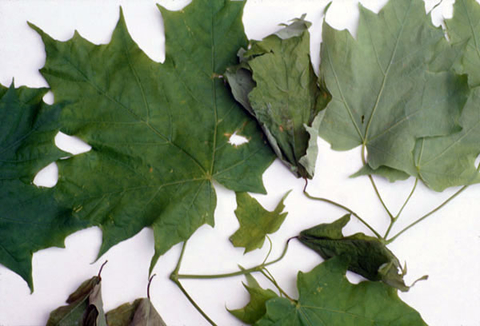Quick facts
- A maple petiole borer (Caulocampus acericaulis) is a non-stinging wasp commonly called a sawfly.
- Maple petiole borer larvae attack all maple species, particularly sugar maples.
- They cause maple trees to drop green leaves in late May or early June.
- It is difficult and unnecessary to control maple petiole borers.
- They do not cause serious damage and their activity from year to year is unpredictable.
How to identify maple petiole borers
Adult borers are rarely seen. They are small, 1/4 inch long, with a dark colored head and thorax and a light colored abdomen.
Larvae are cream-colored with brown heads, legless and about 1/3 inch long when fully grown.
Life cycle
There is one generation per year. Maple petiole borers live through the winter as pupae in the soil and emerge as adults in spring.
- Adults lay eggs in the petioles (stems) of maple leaves in the spring.
- After larvae hatch, they tunnel into leaf petioles and feed there for 20-30 days.
- This tunneling causes leaves to fall, often very suddenly.
- Larvae remain in the part of the stem still attached to the tree until it drops after about 10 days.
- Larvae then exit the petioles and burrow into the soil to form pupae.
Damage caused by maple petiole borers
Maple petiole borers do not affect the health of the tree or its appearance.
- Individual leaves fall to the ground with part of the stem still attached to the leaf.
- The ends of the leaf stems are often black and the leaves are still green.
They are generally found in low levels. Only about 10% of the leaves are affected. Trees can easily tolerate this level of defoliation.
Drought, squirrels, heavy aphid or scale infestations can also cause premature leaf drop.
How to protect your trees from maple petiole borers
The best practice is to ignore them.
- Pesticides are not required and should not be applied.
- Raking fallen leaves is not effective because the larvae are still in the petioles attached to the trees.
You can chose to destroy the petioles that drop after the leaves have fallen. This method will kill the larvae, but will not reduce their population significantly.
Reviewed in 2018



